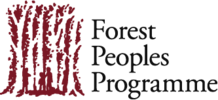
With Us and For Us: Systematising the capacity-building process in the context of gatherings of indigenous women in the San Martin region from 2021 to 2024
This document seeks to raise awareness of the capacity-building, connection-building, and organising process undertaken by the indigenous women of the San Martin region, who have been coordinating Indigenous Women’s Gatherings since 2021. The text is intended for a general audience, and in particular it is hoped that other indigenous women will read it and find parallels and resonance with their own stories and those of their communities and territories.
These Gatherings have become a very important space for the women leaders that participate in them, as well as for their communities and federations. Each Gathering has seen them forge solidarity, empowerment, and respect for their ancestral cultures, all within a safe space in which they feel valued. In these spaces, efforts are made to ensure that the sisters just starting out on their journey toward leadership feel equally as important as the indigenous mothers and wise women who are already proven leaders.
The Gatherings have brought together women leaders from a variety of peoples and territories who, despite their cultural differences, have discovered that they have more challenges in common than they thought. They shared experience and knowledge, developed strategies for boosting their participation in decision-making, and explored how to promote the wellbeing of their communities, among other activities, all of which were addressed both from an organisational standpoint and from the heart.
This report was drafted using a participatory method, actively seeking the opinions of protagonists in the process throughout. The first step was to secure approval of the work plan from the women leaders responsible for coordinating the Gatherings.
Next, individual and group interviews were conducted with sisters from different indigenous peoples, of diverse ages, and with varying levels of leadership experience. In order to produce a document containing a wealth of testimonies, members of the technical team that supported the various stages of the process were also interviewed. Some testimonies are accompanied by the names of those interviewed where these have been given, whereas others are not because they were shared during a collective or anonymous reflection exercise. Secondary sources, such as press releases and published articles, have also been included.
To give a clearer understanding of the process, this report is divided into three parts. The first part gives an overview of all the Gatherings from the first through to the fifth, presenting a summary of the topics explored, the people who attended and the activities performed. The second part sets out the challenges, achievements, and changes identified by the women leaders as a result of their participation in the Gatherings. Here particular emphasis is placed on the organisational aspects and the feelings of the sisters interviewed for this document. Lastly, the final part offers some recommendations for next steps, which take their main cue from the testimonies of the women leaders, who suggested improvements on both an organisational and a personal level.
Overview
- Resource Type:
- Reports
- Publication date:
- 1 outubro 2025
- Region:
- Peru
- Programmes:
- Territorial Governance Culture and Knowledge Conservation and human rights
- Partners:
- Instituto de Defensa Legal (IDL) Centro Amazónico de Antropología y Aplicación Práctica (CAAAP) CODEPISAM

